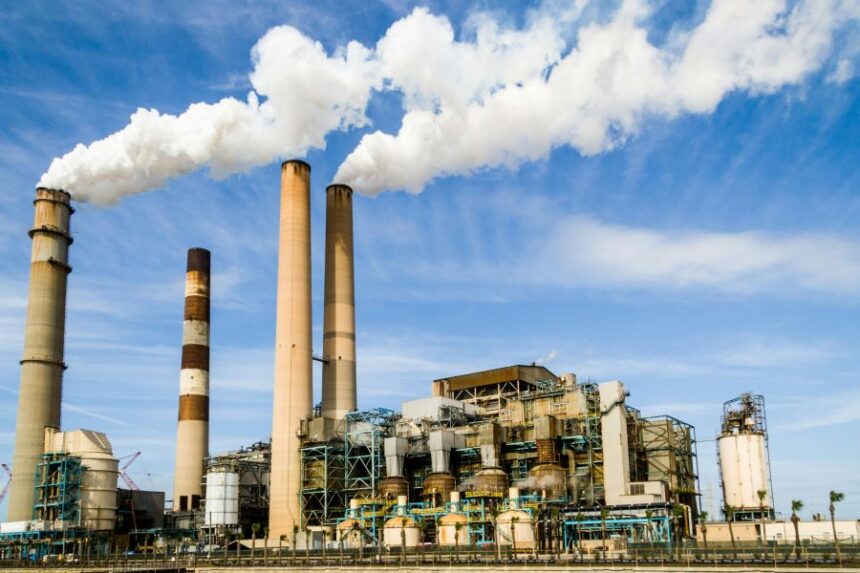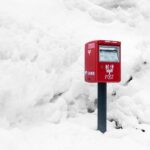If you’ve stepped outside in Colorado Springs today, noticed a haze in the air, or experienced difficulty breathing, you’re not alone. Many residents are asking the same question: Why is the air quality bad in Colorado Springs today? This growing concern is more than a passing nuisance—it affects health, visibility, and overall quality of life.
Despite its scenic beauty and mountainous backdrop, Colorado Springs is not immune to air pollution. Several variables can contribute to spikes in poor air quality, from wildfire smoke to vehicle emissions and seasonal weather patterns. Knowing what’s causing today’s issue and how it fits into broader environmental trends is essential for both short-term awareness and long-term solutions.
This comprehensive guide will explore the current causes of poor air quality in Colorado Springs, the science behind local pollution levels, and what residents can do to protect themselves. Whether you’re dealing with asthma, planning outdoor activities, or simply want to stay informed, we’ll break down everything you need to know about today’s air quality issues in your area.
Why is the air quality bad in Colorado Springs today?
It’s often due to wildfire smoke, vehicle emissions, low wind, temperature inversions, or ozone buildup—all of which trap pollutants near the ground.
The Current State of Air Quality in Colorado Springs
Air quality in Colorado Springs often fluctuates due to its unique geography, high elevation, and proximity to natural elements like forests and mountain ranges. On any given day, several factors can contribute to a decline in air quality, and today’s poor conditions are no exception. One major culprit is wildfire smoke, which can travel from nearby regions such as California or New Mexico, carrying delicate particulate matter into the city’s atmosphere. Vehicle emissions, particularly during peak commuting hours, add to the buildup of pollutants.
Colorado’s naturally dry climate allows dust and pollutants to remain airborne longer, and when paired with low wind conditions, these particulates linger and intensify. PM2.5, a fine particulate pollutant, is of particular concern as it can infiltrate deep into the lungs, posing health risks even at low exposure levels.
Temperature inversions further exacerbate the issue by trapping cool air—and the pollutants within it—beneath a warmer layer of air, preventing dispersion. With little wind or precipitation to cleanse the atmosphere, pollutants accumulate. So, why is the air quality bad in Colorado Springs today? Most likely due to this combination of smoke, vehicle emissions, stagnant air, and natural dust, especially if you notice a haze, smoky smell, or a health advisory in effect.
What Contributes to Bad Air Quality in Colorado Springs?
Air quality in Colorado Springs can decline quickly due to various natural and human-made factors. Understanding these contributors helps explain why pollution levels spike on certain days.
Wildfire Smoke from Nearby States
One of the most significant contributors to poor air quality in Colorado Springs is wildfire smoke, even when fires are burning hundreds of miles away. Large wildfires in California, New Mexico, or even western Colorado can send smoke particles drifting across state lines. These particles often settle over the Front Range, creating a dense haze that affects visibility and respiratory health.
Vehicle Emissions in Peak Traffic
With the growing population and daily commuters, traffic congestion plays a significant role in deteriorating air quality. Cars, trucks, and buses release nitrogen dioxide and carbon monoxide during peak hours, increasing pollutant concentrations. These emissions can accumulate rapidly on days with low wind, especially in valley areas.
Industrial Activity and Urban Development
Construction projects and local industries add dust, particulate matter, and chemical fumes into the atmosphere. As urban development continues, increased airborne pollutants from machinery and building sites contribute to air quality challenges.
Seasonal Ozone Spikes
During summer, high temperatures and strong sunlight trigger photochemical reactions between volatile organic compounds and nitrogen oxides, producing ozone. Ground-level ozone is a significant pollutant that irritates lungs and exacerbates asthma.
Weather Patterns and Wind Stagnation
Finally, calm weather conditions significantly affect air quality. Without sufficient wind to disperse airborne pollutants, contaminants remain suspended. This stagnation allows pollutants to build up, creating unhealthy conditions that can persist for days.
Pollutants Behind Today’s Poor Air Quality
Several types of pollutants contribute to unhealthy air quality levels in Colorado Springs, especially on days when atmospheric conditions allow them to accumulate. Each pollutant affects health and the environment differently, and understanding their sources can help explain why is the air quality bad in Colorado Springs today. Below are the most common culprits:
- PM2.5 Particulate Matter: These are wonderful particles generated by wildfire smoke, vehicle exhaust, and industrial emissions. Because of their small size, PM2.5 can bypass the body’s natural filters and lodge deep in the lungs, increasing the risk of respiratory and heart problems.
- Ground-Level Ozone: Unlike the protective ozone layer in the upper atmosphere, ground-level ozone is harmful. It forms when sunlight reacts with nitrogen oxides and volatile organic compounds. It’s especially prevalent in summer and is a major contributor to smog.
- Nitrogen Dioxide (NO₂): This gas is released from burning fuel in vehicles and industrial operations. High levels of NO₂ can irritate the lungs and decrease resistance to respiratory infections.
- Carbon Monoxide (CO): CO, produced by incomplete combustion, can accumulate in areas with limited airflow. High concentrations are dangerous and can reduce oxygen delivery in the body.
- Volatile Organic Compounds (VOCs): Emitted from sources like paint, cleaning products, and vehicle exhaust, VOCs contribute to ozone formation when exposed to sunlight, compounding air quality issues.
How Air Quality Affects Health and Daily Life
Air pollution in Colorado Springs isn’t just a nuisance—it poses real health risks. On days when air quality is poor, individuals with asthma, COPD, or heart conditions are especially vulnerable. Symptoms like coughing, shortness of breath, throat irritation, and headaches can flare up even in otherwise healthy people. Children, older adults, and those with preexisting conditions face an even higher risk of complications.
Poor air quality also disrupts daily life by limiting outdoor activities such as hiking, biking, or exercising. Health officials often issue alerts advising residents to stay indoors when pollution levels are high. Long-term exposure to polluted air can result in chronic respiratory diseases, increased ER visits, and diminished lung function.
If you’re wondering why the air quality in Colorado Springs today is bad, it’s crucial to also consider what it means for your health. Monitoring conditions and taking precautions can help you stay safe and breathe easier.
Why Is the Air Quality Bad in Colorado Springs Today? Key Factors Explained
Understanding why is the air quality bad in Colorado Springs today requires examining the common environmental and human-made contributors that often cause pollution spikes. Here are five primary factors affecting air quality:
- Seasonal Wildfire Smoke and Long-Range Transport: Wildfire season often brings drifting smoke from fires burning in Colorado or neighboring states. These smoke plumes contain delicate particulate matter (PM2.5) that can travel hundreds of miles, settle over Colorado Springs, and cause rapid drops in air quality.
- Low Wind Activity and Pollutant Buildup: Stagnant air conditions limit the dispersion of pollutants. Without wind to move and dilute emissions, contaminants like ground-level ozone and vehicle exhaust linger close to the surface, increasing health risks.
- Urban Traffic and Industrial Emissions: Pollution concentrates near high-traffic zones, construction areas, and industrial activity. Nitrogen dioxide, volatile organic compounds (VOCs), and dust are commonly released in these areas, leading to locally degraded air quality.
- Visible Air Pollution and Atmospheric Haze: A hazy or brown-tinted sky often signals high levels of airborne pollutants. These visual cues reflect the presence of trapped particulates and smog, usually occurring on days with poor atmospheric ventilation.
- Air Quality Alerts and Monitoring Tools: Real-time data from platforms like AirNow and EPA AQI tools provide timely alerts and detailed pollutant breakdowns. These tools help residents take immediate precautions when pollution levels rise.
Final Thoughts
If you’ve wondered why the air quality in Colorado Springs is bad today, the answer lies in a mix of environmental and human-driven factors. Multiple elements converge to impact the city’s air, from drifting wildfire smoke to temperature inversions and dense traffic to stagnant wind.
Being aware of these causes allows residents to take proactive steps, whether that means staying indoors, using air purifiers, or avoiding strenuous activity. Monitoring air quality daily and understanding key pollutants can help you stay healthier and make better choices about when and where to be active outdoors. Colorado Springs is a beautiful place to live, but like many growing urban areas, staying informed about air quality is more important than ever.
FAQ’s
What causes sudden bad air quality in Colorado Springs?
Usually, a combination of wildfire smoke, stagnant air, or increased vehicle emissions occurs during traffic peaks.
How can I check the air quality in Colorado Springs today?
Use real-time tools like AirNow.gov, PurpleAir, or the EPA’s Air Quality Index (AQI) apps.
Is it safe to exercise outside when the air quality is poor?
Not recommended. It’s best to limit outdoor activities on days with high AQI, especially for sensitive groups.
Does wildfire smoke reach Colorado Springs from other states?
Yes, smoke from distant wildfires often travels through jet streams, affecting air quality locally.
What are the long-term effects of poor air quality?
Prolonged exposure can lead to asthma, bronchitis, cardiovascular issues, and decreased lung function.










